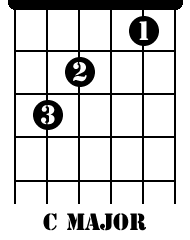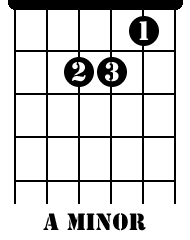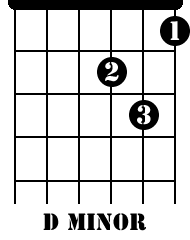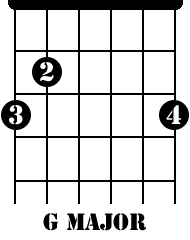Subject: Where to Begin, Where to Begin...
You are getting this e-mail because you subscribed to it on www.learn-to-play-rock-guitar.com. If you don't want to receive these e-mails any longer, go to the bottom of this message and click on "unsubscribe." Hey there Friend, In the last email, we talked about reviewing the basics of playing guitar - getting to know your gear, basic music theory, scales, chords and technique. That's all great for those of us that already play guitar, but what about you folks that are just picking it up for the first time (or the first time in years...)? The question becomes, "Where do I start learning?" What do I focus on first?That can be a tricky question. Because we all learn best in different ways, it's difficult to approach a new topic in a way that satisfies everyone, so I'm just going to jump in with some ideas and guidelines, and you can take it from there. Feel free to send me an email with any questions! The challenge any instructor has is both giving you the relevant information you need right now and keeping you interested and having fun. Sadly, way too many teachers don't pay attention to the second part. Let's see how I do! In order to start playing music right away, we can take two approaches - melody and harmony. What does that mean? Melody is basically the notes that make a song recognizable. If you hum a tune to yourself, you'll most likely be humming the notes a singer would sing. Harmony, on the other hand, is going to be the chords a guitarist might play. With chords, you're combining a number of notes together to get a distinct sound. These notes "harmonize" with the notes of the melody. In fact, some of the notes in the melody are also some of the notes in the chords. Of course, you could also have other singers harmonizing with the main singer to create a contrasting sound to the melody. Let's look at melody first. Since we're talking about playing individual notes, this will be the quickest and easiest way to start playing real music. It's pretty easy to either find tablature (tabs) for for a song or to listen to a melody and duplicate it on the guitar by hunting for individual notes on the fingerboard, although this can be a disjointed approach. What I mean is you have to either choose a note to begin with and hum it until you find it on the guitar neck, or you have to keep stopping the song and restarting it to get back to the note you're trying to find on the neck. Songsterr is a great place to find tabs for many songs. Starting with melody gets you learning some music right away and actually creating sound that you enjoy and can recognize (hopefully!). You also begin getting familiar with pressing your fingers on the strings and learning the amount of pressure you need to make the notes sound clean and clear. I know, I know, your fingertips get a little sore - this will go away as toughen up your fingers and hands. You're tough - you can handle it! Focusing on melody has an additional benefit in that once you know how to play the melody of a song, you can then use that information to learn the note names for that melody. Do this by combining you finger work with charts of the fingerboard that show you the notes on each fret. As you learn these note names, you will begin to memorize other locations on the neck for these notes, and you'll find you can play the melody in multiple places on the guitar. Guess what - this is foundational to you being able to play guitar solos in the future!  If you're more interested in learning guitar as a way to "flesh out" a song, approach it from the harmony side. We've already discussed melody as the individual notes, most likely being the notes attached to the song lyrics. With harmony, we're learning the chords that make the song structure more full. As I mentioned earlier, chords combine a number of notes together to make a unified sound. If you think about a band, you will usually have at least three instrumentalists - a drummer, a bass guitarist and a guitarist. When building up the sound of a song, drums lay down the rhythmic foundation and bass fills out the low end of the sound spectrum - this makes the sound fuller and add some contrast. Your guitar brings in the middle section of the sound with chords. It fills out the total sound - gives it some meat, if you will. The best place to start learning chords is with open chords. These chords are played within the first 3-4 frets on the guitar neck, up close to the nut. They're called open chords because, depending on the fingering you use, each chord has strings played openly (meaning, you don't have any fingers on those strings). The challenge with starting out learning chords on guitar is that it can be tough to get your fingers to do what you want them to do. To get a nice clear sounding chord, your fingers have to be in the right places without interfering with other fingers and strings. Add to that the general soreness of your fingertips as you practice, and you can begin to see why it can get a little frustrating for some people. Fortunately, there are some very easy open chords you can start out on to get up to speed. Then you can begin to add more chords as your fingers both stretch and toughen up. Some cool open chords to start with that are easy and will begin toughening up your fingers are C major, A minor, D minor and G major. These chords have very straightforward fingerings and won't take long to master. In fact, you'll even begin to feel comfortable switching between chords because the finger positioning is similar and the string changes are very close. As an added benefit, these chords are part of the key of C major, which is the simplest key to learn in music.     If any of this stuff sounds strange or you're afraid you can't learn it, or it doesn't make any sense right now, don't worry. I'm going to get you up to speed. It might take us a while to get there, and you might have to send me question after question until you understand it, but I'm here for you, so don't hesitate. Just hit reply and ask - I read every email from you! Thanks for being the "rockin'-est readers" out there! Peace~ Dave Dave "Eddie" Vance is a rock guitar enthusiast and gear nut. He has been playing guitar for over 30 years and enjoys tormenting the neighbors every chance he gets. When he's not slaving for the man, you can find him rocking out with his B.C. Rich Bich guitar, a cold beer and some sweet tunes. He also runs Learn-To-Play-Rock-Guitar.com, but you knew that already! Follow Learn To Play Rock Guitar:I welcome your feedback! Did you like today's message? What other topics would you like to see covered in my e-mails? Please let me know at: dave@learn-to-play-rock-guitar.com As always, please feel free to forward this email to a friend! I review products before recommending them. If you buy a product based on my recommendation, I will receive a commission. However, my emails also contain links that don’t require any investment on your part and are jam-packed with "juicy, guitar learnin' tastiness". We don't rent or share your name with anybody. Feel free to forward this issue to any friends you think would enjoy its contents. They will thank you. So will I.
|


